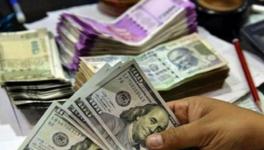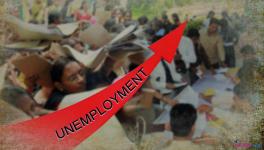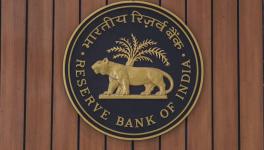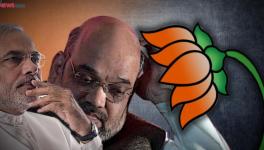Inflation is 'Real', and so Should be its Solutions
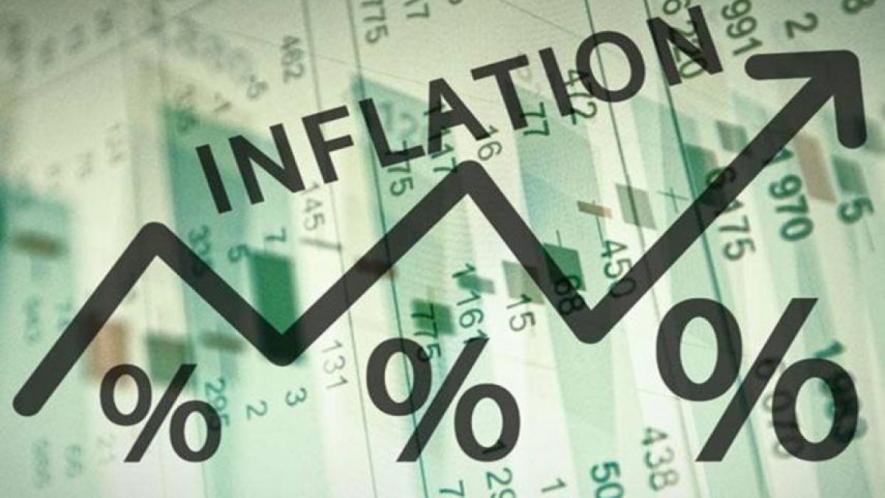
Image Courtesy: Outlook India
Inflation – and ways of tackling it – affects real people. It is not a number in abstraction that we watch on a television screen being discussed by 'experts', but it determines how real resources are distributed in our society and how equitably accessible they are to different groups of people. Ordinary people almost never get to have a say on how the government should control inflation, which affects what they eat, how much they earn, which schools they get to send their children to, the health treatment they can afford, and what their savings will be worth in their old age. On the contrary, they bear the consequences of bad decisions taken under the influence of 'gatekeepers' of powerful interests.
The Russia-Ukraine war has added an unknown dimension to the already-heated inflation debate worldwide. Wall Street economists and financial media commentators have rushed to predict that the US Federal Reserve (Fed) is unlikely to change its plans to hike interest rates starting March, though opinions abound on what could be the extent and pace. While some have actually begun to wonder aloud just how an effective monetary policy would be in the face of such geopolitical/oil price shocks, a few contest if – with or without crisis – it was ever the best way to deal with inflation.
Perhaps, the Reserve Bank of India's (RBI) decision not to touch interest rates in its February 10 Monetary Policy Committee meet changes this narrative a bit. The RBI went against the grain and most market predictions, though knowing fully well then that the world's most powerful central bank is on the verge of an aggressive rate hike cycle not seen since 2015-18, and oil prices are at a seven-year high. The RBI governor even cautioned against looking at high oil prices at a given moment and reading that into inflation forecasts (at that time, the invasion of Ukraine and sanctions against Russia had not begun). Many missed that month-on-month, January retail inflation had actually declined.
Suppose the RBI indeed manages to hold this line in its next meeting and beyond, notwithstanding how the Ukraine situation pans out and what the Fed will do. In that case, it signifies two important developments: firstly, the central bank has quietly cast aside the interest rate as the most prominent weapon to influence the direction of prices, and rightly so. It would imply that the more sophisticated array of unconventional measures to manage liquidity and financial stability, which have come to replace the crude interest rate instrument of late, is here to stay.
Two, and perhaps more importantly, it would show that the RBI has prioritised coordinating decisions with the government on longer-term goals for the domestic economy, rather than blindly following howsoever powerful global central banks' stubbornly orthodox monetary policies.
Even this acknowledgement — that monetary policy exists in a context with consequences for real people — puts the RBI ahead of, not behind the curve, of most central banks today. That said, the RBI cannot do this alone.
Fiscal Policy, Inflation, and Market Power
Heterodox economists have been stressing that such "undying faith" in interest rate management to get growth off the ground, or soft-land an over-heated economy, has time and again proved inefficacious. The cases in point are the decade after the Global Financial Crisis and the 1979-80 'Volcker shock' in the US.
Fadhel Kaboub, associate professor of economics at Denison University, has been prominent in pointing out that central bank tools have little effect over the most common sources of inflation such as oil price shocks, geopolitical crises, international commodity producer cartels, and supply chain disruptions, or food supply shortages.
In an important lesson for what the world faces today, Kaboub explains how 'stagflation' in the US in the 1970s had nothing to do with higher government spending or labour unions. It was caused by rising oil prices because of a conflict in the Middle East when "the OPEC decided to teach the Western world a lesson for siding with Israel, by cutting oil production," he says. The stagflation eventually ended in the 1980s, not because of the Fed (Volcker raised the interest rate to 20% by 1980), but because the conflict was resolved diplomatically by President Jimmy Carter, who also deregulated the natural gas industry as a substitute for oil.
Thus, it is the government and the fiscal policy, which must play a central role by increasing and directing spending to where it is most needed, and thereby, fighting inflation, Kaboub says.
In a democracy, this framing also allows us, the people, to participate actively in inflation management decisions.
Take for instance, the already skyrocketing crude oil prices (which could worsen with the Ukraine crisis). A common, overly simplistic way to explain it is in terms of 'shortage in supply compared to demand'. But is all of the price rise coming from genuine shortage, or is there something more at work?
Cartelisation and price gouging (the ability of some players to charge excessively high prices by taking advantage of a supply shortage or a sudden rise in demand) arise out of an imbalance in market power and is one of the most important —but least talked about — sources of inflation.
If powerful oil cartels and companies are known for this, in India, it is also the central government that acts as the final price setter – acting exactly like these cartels have — over and above the oil marketing companies. Remember how many times people ended up paying more per litre of petrol/diesel at the pump when international crude prices had actually fallen?
That is because every time crude prices fall, the government imposes fresh taxes and rakes in revenues. Despite 'deregulation', India has the highest tax on fuel globally, never allowing retail prices to climb down.
On the other hand, we have also seen that as long as the Indian government wants to hold fuel prices down, like during this current episode of key state elections, it can. But also, as long as it can extract more taxes on fuel, it will.
Looking ahead, as all countries are better off reducing external dependence on crude, and must mandatorily turn towards renewable and alternative energy to avert severe effects of climate change, huge investments in clean energy is the only long-lasting solution. But is the government really doing enough to ensure that urgently?
These are really the questions we should be asking more, rather than debating the extent and timing of a mythical tool of 'inflation control'.
Edible oil is another significant source of imported inflation in India, with about two-thirds of domestic palm oil consumption relying on imports. Here, while the government has tried bringing down import duties on refined palm oils, international prices have risen in tandem (again, probably due to cartels in the exporting countries), offsetting any benefit of the reduced import duties. One way to go around this, followed by states like Tamil Nadu, has been to use the public distribution system (PDS) to sell subsidised edible oils in times of high prices to shield the poorer PDS users from inflation. But that still does not solve the long term problem of lack of self-sufficiency in oilseeds.
These examples show that a fiscal policy has ample firepower — much more than monetary policy — to stabilise (or destabilise) prices and influence the level of inflation.
Time to Drop That Interest Rate
An interest rate hike would only raise the cost of borrowings for manufacturers across the board, with little effect on large companies that have hugely strengthened their cash positions in the past two years. Rather, it is small, already leveraged, and mostly unorganised producers who would bear the burden. That would further jeopardise the livelihoods of workers who depend on them and are the worst-off in terms of income security. Small producers also have less power to 'pass through' rising input costs to consumers.
This would lead to a further concentration of business and profits and transfer more market pricing power to the large players.
On the other hand, it makes far more sense for the RBI to keep interest rates low and devise ways along with the government to support the small manufacturers and workers while directing more resources. On its part, the government must, while imposing selective taxes and regulation on companies earning super-normal profits, take a hard look at the perverse taxes that penalise the wrong set of people. It should better plan and execute measures to sustainably address the by now well-known pressure points of price instability, with equitable distribution — not just growth — as the goal. Finally, it is for us to question the government, if it does not.
(Sowmya is an independent writer and can be reached at [email protected])
Get the latest reports & analysis with people's perspective on Protests, movements & deep analytical videos, discussions of the current affairs in your Telegram app. Subscribe to NewsClick's Telegram channel & get Real-Time updates on stories, as they get published on our website.









